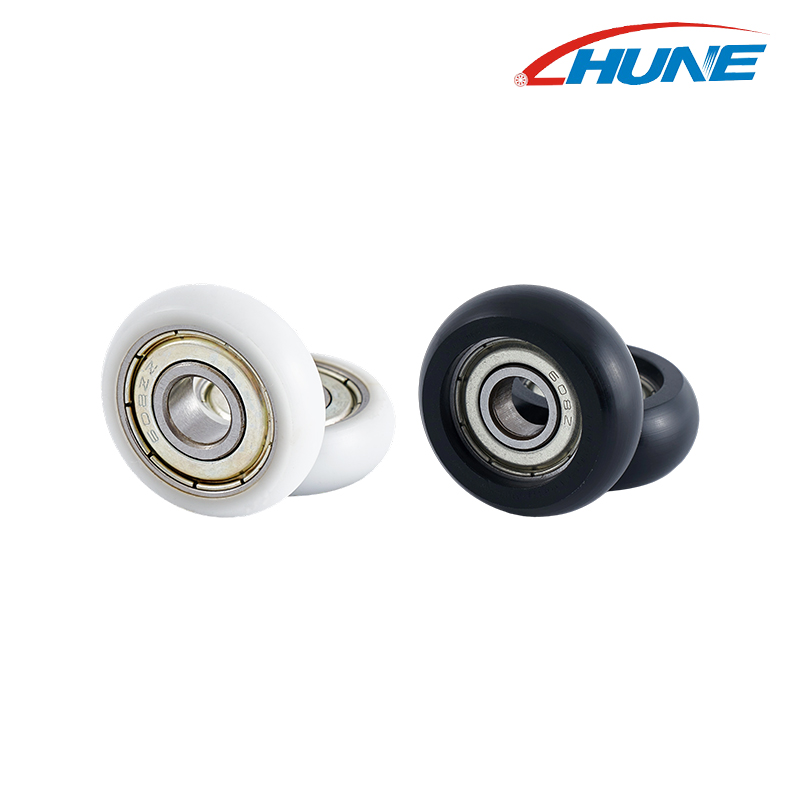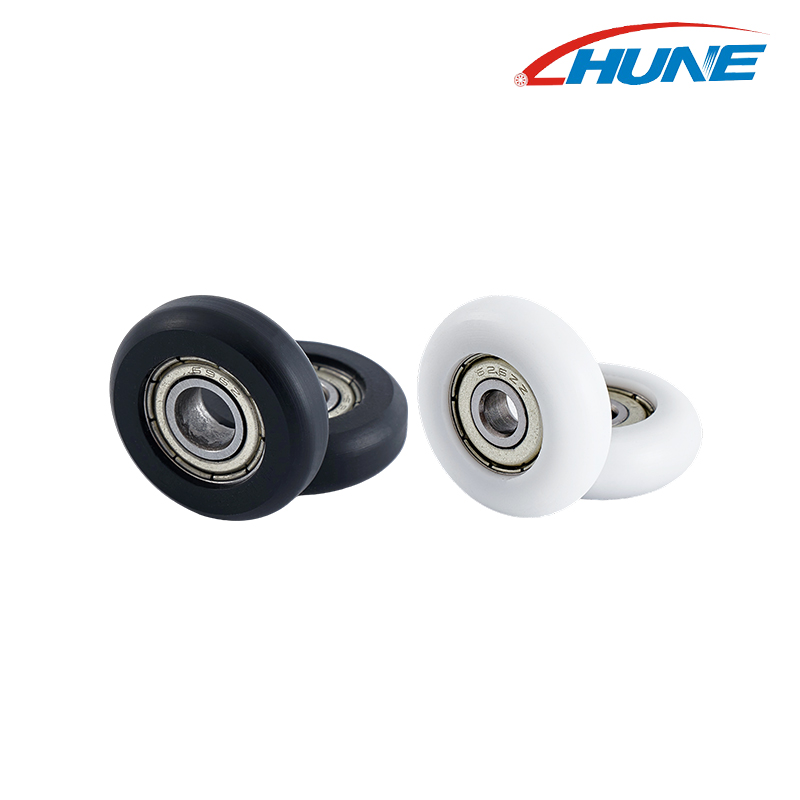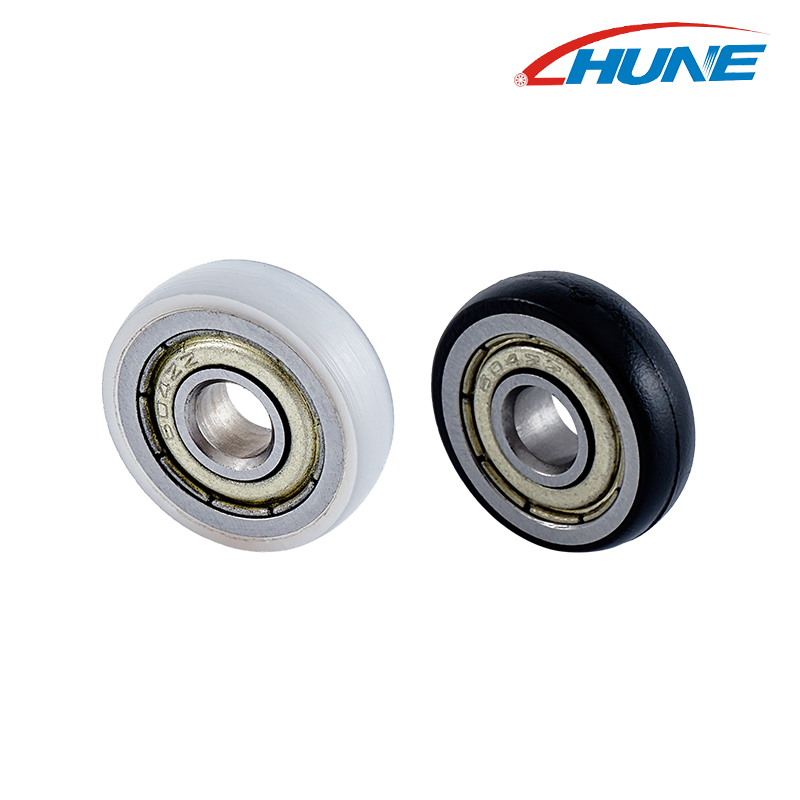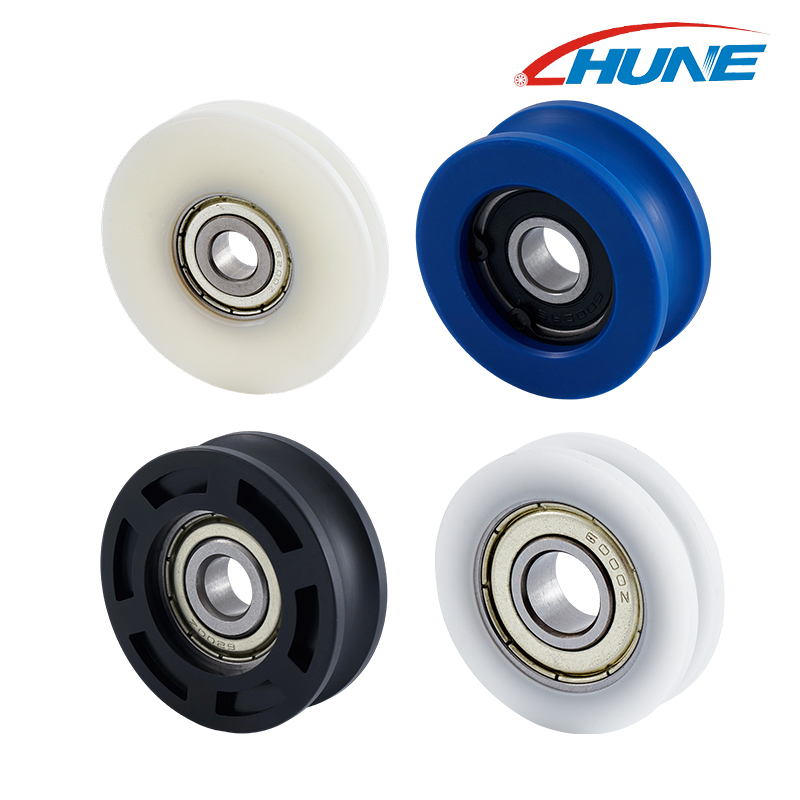In the overall operation of a garage door, although the rollers are small in size, they are critical components that determine whether the door can maintain smooth and safe performance over the long term. They quietly shoulder the important task of supporting the door's weight while precisely guiding it along the track. Their performance not only directly impacts the quietness and stability of daily operation but is also closely linked to the reliability of the entire garage door system.
Key Signs That Rollers Are Affecting Garage Door Performance
Your garage door weighs a few hundred pounds, moves several times a day, and most people never think about it until it screams, jerks, or refuses to open. In almost every case I've seen over the years, the real culprit isn't the springs, the opener, or even the tracks — it's the humble rollers. Those little wheels carry the entire load, and when they start to fail, the symptoms are unmistakable. Here are the tell-tale signs that your rollers are the problem, not something else.
1. Grinding, Scraping, or Metal-on-Metal Sounds
Smooth nylon or sealed steel-bearing rollers should be nearly silent. If you hear a harsh grinding or scraping every time the door moves, the rollers have either lost their bearings, flattened on one side, or started chewing into the track. Open the door halfway and listen carefully — you can usually hear exactly which roller is singing the death song.
2. The Door Shudders or Jerks During Travel
A healthy door glides evenly from top to bottom. If it shudders, jumps, or hesitates at certain points, one or more rollers are binding. This happens when old open-bearing steel rollers fill with rust and dirt, or when cheap plastic wheels crack and catch on the track.
3. Visible Gaps or Wobbles in the Door Panels
Stand inside the garage while someone operates the door slowly. If you see the panels rocking side-to-side or notice daylight gaps that come and go, the rollers are no longer holding the door firmly in the track. This is especially common with old 2-inch steel rollers that have worn oval-shaped over time.
4. Uneven Wear Marks on the Tracks
Take a flashlight and look inside the vertical and curved sections of the track. Deep grooves, shiny polished spots, or little piles of black dust are all signs that metal rollers are eating the track instead of rolling smoothly. Once the track is damaged, even new rollers will struggle.
5. The Door Feels Much Heavier to Lift Manually
Disconnect the opener and lift the door by hand (carefully!). If it suddenly feels like you're raising a bank vault instead of a garage door, the rollers are seized or dragging. Good rollers make a balanced door feel almost weightless; bad ones make you regret skipping leg day.
6. Rust, Cracks, or Missing Pieces

Steel rollers rust, nylon rollers crack, and plastic ones just crumble. Any visible damage means the roller is on borrowed time. I've seen wheels literally explode into pieces mid-cycle, leaving the door hanging crooked and the track scarred.
7. The Opener Strains or Shuts Off Mid-Cycle
Modern openers have force sensors. When rollers bind, the opener senses extra resistance and either reverses or shuts down to prevent damage. If your opener is "acting up" but the springs and cables look fine, suspect the rollers first.
Key Signs of Worn or Damaged Garage Door Rollers
|
Key Sign |
Cause |
Impact / Notes |
|
Excessive Noise |
Squeaking, grinding, rattling due to worn or misaligned rollers, poor lubrication, or material type |
Indicates roller wear; high-quality sealed rollers reduce noise |
|
Irregular / Jerky Movement |
Worn bearings, misaligned rollers, flat spots or cracks on wheels |
Increases stress on opener; can cause uneven door motion |
|
Visible Damage |
Cracks, chips, flat spots, rusted or stuck bearings |
Requires early replacement to prevent track or door damage |
|
Difficulty Opening / Closing |
Friction from worn, misaligned, or damaged rollers |
Strains opener and hardware; may create safety hazards |
|
Track Misalignment / Door Sagging |
Roller wear or failure affecting track alignment |
Causes tilting, uneven gaps; increases system wear and safety risk |
Common Causes of Roller Wear
Garage door rollers are subjected to constant stress, and understanding the factors that accelerate their wear is essential for maintaining smooth, reliable door operation. Several key factors contribute to roller degradation over time:
1. Dirt and Grit – The Silent Sandpaper
The number one killer by far. Sand, pet hair, drywall dust, and road salt sneak into the track and embed themselves into the roller surface. Every cycle turns that grit into microscopic grinding paste. Plastic and nylon wheels get flattened spots; steel wheels get pitted; bearings fill up and seize. Once dirt gets inside a sealed bearing, the grease turns into abrasive sludge and the end comes fast.
2. Water and Moisture
Rollers live in the worst possible places: shower doors, patio doors, coastal homes. Constant humidity rusts steel axles and housings, swells cheap plastic wheels, and washes lubricant out of open bearings. Even "stainless" rollers fail when the wrong grade is used or when seals break.
3. Misalignment and Side Load
When a door or window is installed slightly twisted, or when it settles over time, the rollers no longer roll straight. They start sliding sideways against the track lip. That sideways pressure crushes bearings, cracks nylon, and wears flat spots faster than pure vertical load ever could.
4. Overloading
Every roller has a weight limit. A beautiful new triple-glazed patio door looks great until someone hangs 250 kg on rollers designed for 80 kg. The bearings flatten, the housing bends, and the wheel turns oval. It still "works" for a while, but every movement is grinding metal away.
5. Poor Quality Materials and Shortcuts
Cheap recycled plastic wheels crack in sunlight. Thin steel axles bend. Unsealed bearings let dirt in from day one. I've seen brand-new rollers fail in six months because the factory saved a penny on grease or used soft aluminum that pits the first time it sees rain.
6. Lack of Lubrication (or Wrong Lubrication)
Sealed bearings are maintenance-free until the seal fails, then they're doomed. Open-bearing steel rollers need occasional light oil, but most people never touch them. Worse, some folks spray WD-40 or silicone into nylon rollers, which swells the material and destroys it.
7. Heat and UV Exposure
South-facing patio doors bake in direct sun. Low-grade nylon and POM wheels become brittle, lose their shape, and crack. Dark-colored plastic absorbs even more heat and ages twice as fast.
8. Impact and Abuse
Kids swinging on the screen door, delivery guys forcing a sticky door, or the family dog slamming into it — every shock transfers straight to the roller axle and housing. One good hit can crack a wheel or knock a bearing out of round.
Maintenance and Preventive Measures for Garage Door Rollers
Proper maintenance is essential to extend the lifespan of garage door rollers and ensure smooth, safe operation. Regular inspection and preventive care can help identify early issues before they affect overall door performance.
1. Clean the Tracks Twice a Year
Dirt is the number-one roller killer. Disconnect the opener, lift the door halfway, and vacuum out all the sand, leaves, and black dust that collects in the curves. Wipe the inside of the track with a rag and a bit of mineral spirits. Clean tracks let rollers roll instead of grind.
2. Inspect Every Roller
While the door is up, spin each roller by hand. Smooth and silent is good. Crunchy, wobbly, or seized means it's time to replace. Look for rust streaks, flat spots, or cracked nylon. Catching one bad roller early saves the rest.
3. Lubricate Only When Necessary
Sealed nylon or ball-bearing rollers → never lubricate. Grease just attracts dirt.
Old open-bearing steel rollers → one small drop of light machine oil on the bearing once a year, then wipe off excess. Never use WD-40 or heavy grease; they turn into grinding paste.
4. Check Door Balance and Alignment
Lift the door manually after disconnecting the opener. If it feels heavy or drifts down, the springs need adjustment (call a pro). A crooked door puts sideways pressure on rollers and destroys them fast.
5. Upgrade to Sealed Nylon Rollers
When it's time to replace, skip cheap steel or plastic. Sealed 11–13 ball-bearing nylon rollers are quiet, maintenance-free, and last practically forever. Replace all of them at once while you're at it — the difference is night and day.
Selecting Rollers to Prevent Performance Issues
Choosing the right roller type is crucial for maintaining smooth operation and reducing long-term maintenance.
1. Material That Matches Your Life
- Cheap steel rollers: loud, rust quickly, and shred tracks. Fine for a rental you don't care about.
- Plastic rollers: silent for a year, then crack and crumble. Never again.
- Nylon rollers: quiet, light, corrosion-proof, and gentle on tracks. The only choice for most homes.
2. Sealed Bearings Are Non-Negotiable
Open-bearing steel rollers fill with dirt the first month and grind themselves to death. Sealed precision ball bearings (11 or 13 balls per wheel) keep grease in and crud out forever. You'll never lubricate them and they'll still spin smoothly twenty years later.
3. Stem Length and Diameter Must Fit Your Door
Most residential doors use 2-inch nylon rollers with a 4–4.5 inch stem (measured from wheel to tip). Commercial or older doors sometimes need longer 7-inch stems. Measure one of your old rollers before ordering — one millimeter off and it won't seat correctly.
4. Load Rating – Don't Guess
Standard 2-inch nylon rollers with 11–13 bearings handle typical 7–9 ft doors without breaking a sweat. Heavier 16–18 ft doors or insulated steel doors need the same rollers; the extra bearings already cover it. Only wood or oversized custom doors need special heavy-duty versions.
5. Quantity: Replace Them All at Once
Mixing old and new rollers is asking for trouble. Old ones will still squeak and drag while the new ones do all the work. Change every roller on the door at the same time — usually 10–12 pieces — and you'll feel like you installed a brand-new door.
Whether you're looking for quiet nylon rollers, heavy-duty sealed-bearing models, or specific sizes for older doors, Hune has you covered with a complete selection of premium rollers. Every one is built from the right materials and engineered to deliver smooth, dependable operation and years of trouble-free performance on any garage door.






 English
English  Español
Español  日本語
日本語 









